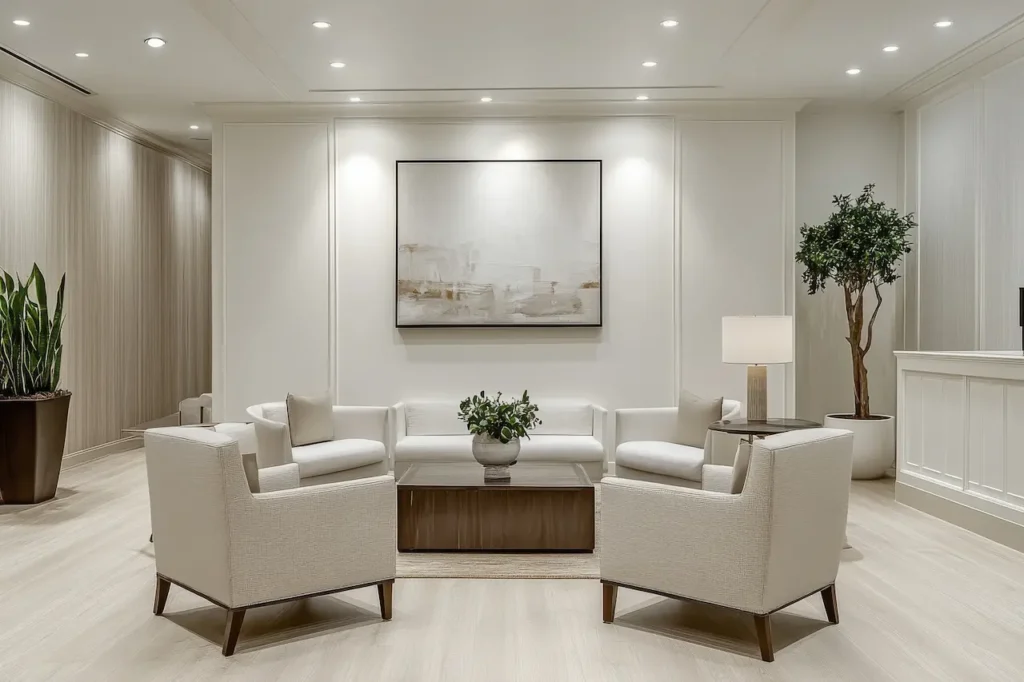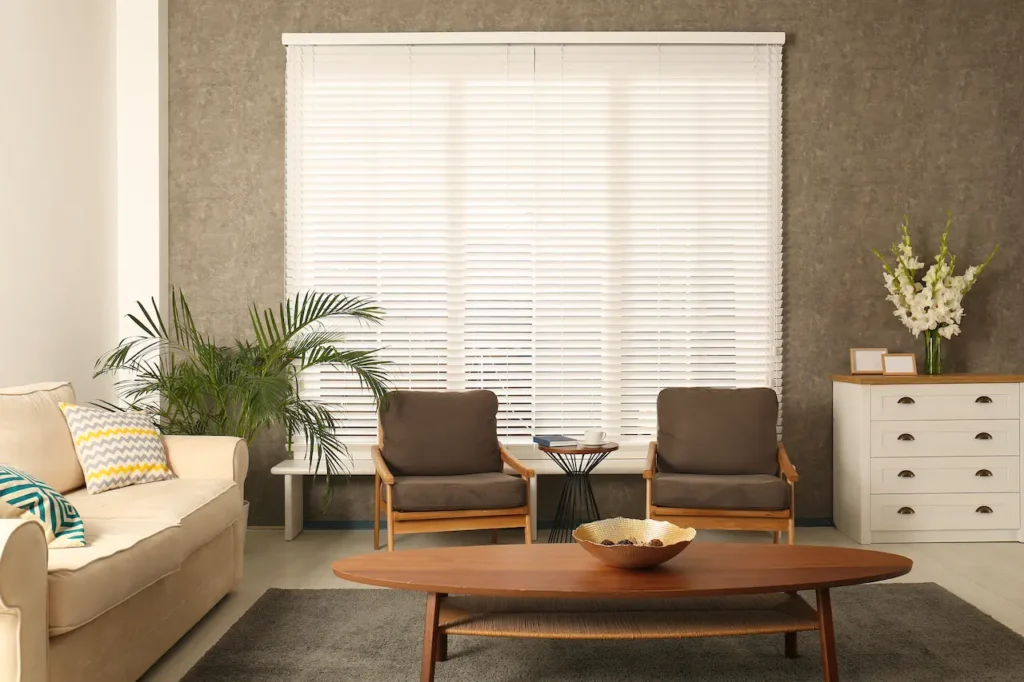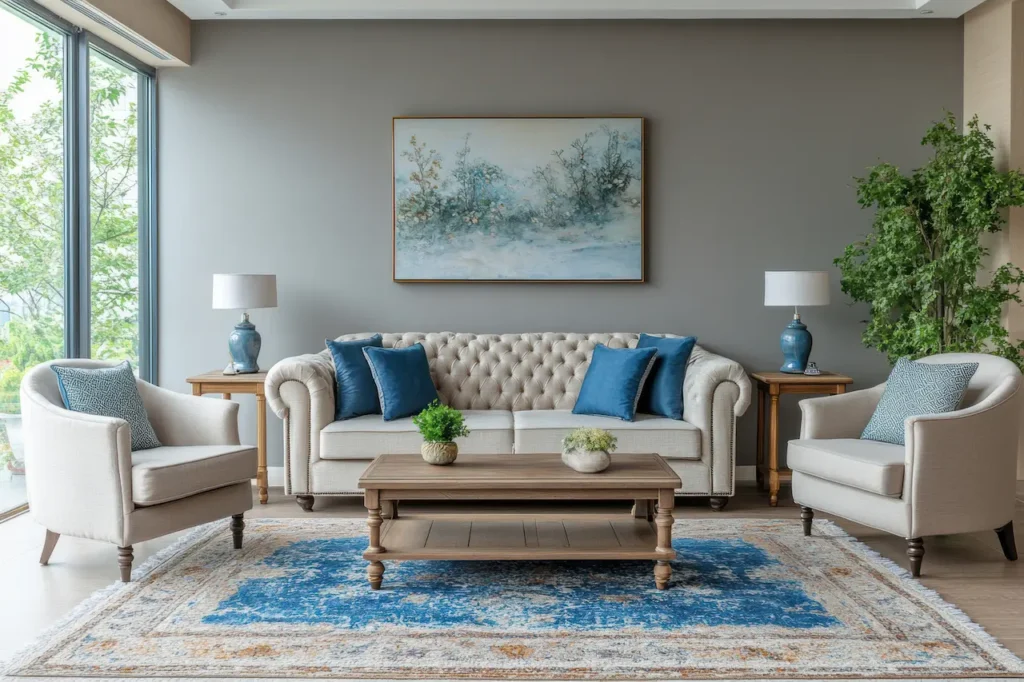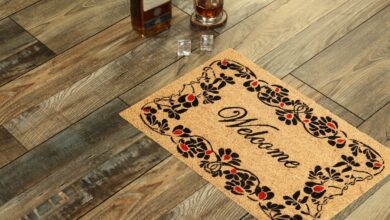Furniture Arrangement Tips for Every Room
Fix My Problem: Furniture Arrangement Tips for Every Room
Furniture arrangement is a major challenge for home decorators. Many people find it difficult to decide how to arrange furniture, whether they are designing a room or trying to maximize an existing one. It’s hard to decide what is aesthetically pleasing and functional and what will make a room feel spacious and welcoming.
You’re not the only one who has ever felt unsure about how to arrange your living room, or any room for that matter. It’s not uncommon for people to struggle with finding the perfect balance between practicality and style. The good news is that anyone can learn how to arrange furniture with some guidance. Understanding your space and working with the features in the room are all it takes.
Tina’s long, narrow living room: A Reader’s dilemma
Tina is a reader who shared her problem with us. She has been struggling to place furniture in her long, narrow living room for the past 19 years. The room measures 4 x 7 meters with a central hallway leading to the dining and kitchen area. The room has two doors and a staircase located on the opposite side of the seating area.
Tina has a three-seater couch, an armchair and a two-seater along the shorter wall. She also has a large entertainment system made of three pieces. Tina knows she has too many pieces of furniture in the room but she isn’t sure where to begin when it comes time to create a more functional arrangement.

Tina is a common story. People love their furniture, but they aren’t sure how to fit it into their space. To solve these dilemmas, you need to plan carefully, understand key layout principles and consider both aesthetics and functionality.
How can Tina, and anyone else in a similar position, transform their living room into an organized, functional space? Let’s take it step-by-step.
1. Start with the basics: Analyze an empty room
Analyze the entire room before you start thinking about how to arrange each piece of furniture. Be sure to pay attention to the room’s structural elements, including walls, windows, and doors. Also, any architectural features that cannot be changed should be considered. Understanding these features will help you decide what works and where.
Measure the Space
Take accurate measurements of your entire room. It is important to know the exact dimensions of your room to determine where you can place furniture, how much space there is, and what areas should remain free. You can visualize the layout using a tape measurement or an online room planner.
Permanent Markings
Be aware of any permanent features that could affect the furniture arrangement. Tina’s staircase and doorways will affect where furniture can be placed. You’ll also want to avoid placing any furniture in front windows to maximize the natural light. You may want to arrange your seating around a fireplace if there is one.
Create a Floorplan
It can be helpful to draw a rough plan of the floor on graph paper, or you can use an online tool. You can visualize your room and its furniture about each other, allowing you to experiment with different arrangements.
Understanding the impact of each element
You’ll be able to better understand the constraints of the room by breaking it down. Remember that some features, such as a doorway or staircase, may require more flexibility when it comes to where you put things. You might want to give people enough room to pass through doorways or to navigate the space comfortably.
2. What is the purpose of this room?
Next, you need to decide how the space will be used. When arranging furniture for a room, many of us forget to consider the function of the space. However, this is an important factor.
What will be the activities?
Think about what you will do in the room, and who else might be there. It’s primarily used for reading, watching TV or hosting friends. Or a combination of all three? Think about what you would like the space to do for you.
If the main purpose of the room is to watch TV, then the design should be centred around comfort. You’ll want to give priority to comfortable seating and lighting if it’s intended to be a reading corner. List the activities you want to accommodate in the area, for example:
- Watching television: You will need a TV set, a media player, some comfortable chairs, and perhaps a side table
- Read: Good lighting, comfortable seating and a possible bookshelf.
- Entertaining Easy seating access and good traffic flow.
- Exercise You may need a large area to accommodate a yoga mat or treadmill.
Multi-purpose Room
It may be ideal to divide a room into different zones for different activities if you have a big room or an open-plan space. One corner of the room could be devoted to a media space with a television, while another corner could be set up as a cozy corner for reading.
3. Select a focal point: The Heart of the Room
A focal point is essential for every room. It’s something that draws attention and makes the space the centre of attraction. It could be the fireplace, TV, large windows with beautiful views, or a piece of art or furniture that makes a statement.
Tina has the option of a fireplace or a television as her focal point. You can position your furniture more effectively if you decide which focal point will be the main one.

The fireplace as a focal point
Arrange the seating in your room around the fireplace to create an intimate, cozy atmosphere. This works well in a room that is meant to be a place of relaxation or for socializing. You should consider that a fireplace is a great visual anchor. Place seating facing it, or in a way where guests can enjoy its ambience.
TV as a focal point
In rooms where the television is the main focus, ensure that it is positioned so everyone can comfortably see it. This means that the sofa is usually placed in front of the TV with the rest of the seating arranged around. Consider the size of your TV and how it will fit in the room. Also, make sure that the viewing height is appropriate.
Other focal points
You can create a focal point in your room if it doesn’t already exist. Use artwork, lighting or furniture to do so. A large piece, like a dramatic chair or oversized mirror, can be used as an eye-catching focal point. Consider a gallery wall or a rug that is bold to anchor your room.
4. Keep it functional: Plan traffic flow
The flow of traffic is a key element in designing a functional layout for your living room. It is easy to become engrossed in the aesthetics of a room and overlook how people will use it.
Pathways and Walkways
Make sure that people can easily move from one part of the room to another. The room’s flow should be natural and not crowded. Tina, for example, needs to be allowed to pass through the living area to reach the kitchen and dining area. This traffic should have enough room to allow for comfortable seating arrangements.
There is Space Between Furniture
Also, you should consider the space between furniture pieces. It should be possible to move easily between the couch and the coffee table. Guests can easily reach drinks and snacks without moving furniture. You should leave at least 18 inches between the seating area and the coffee table.
Distance from TV for viewing
As you plan your layout, ensure that your seating is the correct distance from the TV. As a general rule, you should sit three times as far away from your TV screen as the diagonal measurement. If you have a TV that is 55 inches, then aim to be about 12 feet from it. This will allow you to enjoy the TV without straining your eyes.
5. Position larger furniture first
After you’ve gotten a feel for the dimensions of the room, the traffic flow and the focal point now is the time to begin positioning the furniture. Start with the largest pieces such as the media unit and sofa. They will take up most of the space so it is important to place them correctly.
Media Units Placement
It’s important to consider the placement of the media unit, as it is usually a focal point in a living area. Tina has a large entertainment unit that is divided into three sections. She could consider placing the TV in a section of the room and using the other sections of the unit to create a reading area or a small workspace.
Sofa Arrangement
Sofas are usually the largest furniture piece in a room and serve as its focal point. Tina might choose to place her sofa in front of the fireplace if it is the focal point. She’ll want the seating to be aligned comfortably with the TV if it is the focal point.

6. Add smaller pieces to accessorize your space
It’s now time to add small pieces that will enhance the aesthetics and functionality of the space.
Side tables and lamps
For comfort and convenience, side tables and floor lights are essential. Make sure that side tables are within easy reach of the seating and there is enough light for reading, and other activities. Position the lamps so that they can provide enough light to illuminate without overpowering the room.
Rugs and Artwork
Rugs are a great way to anchor the seating area and define it. They also add warmth. The rug should be large enough to cover all major furniture, including the sofa’s front legs. Use artwork to highlight the focal point of the room or to bring interest to blank wall surfaces.
7. Final adjustments: fine-tuning your layout
Take a step back after you have placed the main pieces and assess the layout. Is everything balanced? Do you feel crowded or uncomfortable in any areas? You can make minor adjustments to the arrangement. You can try different groupings of furniture or change things around until you find the layout that suits you.
The Perfect Living Room Your Way
It may seem overwhelming to arrange furniture, but the right approach can create a beautiful space that is also functional. You can maximize both style and comfort by arranging your furniture by the flow of your room.
You can experiment with layouts to create a space that is both spacious and small. You can create a perfect furniture arrangement in any room of your house with a little creativity and time.
Happy decorating!




